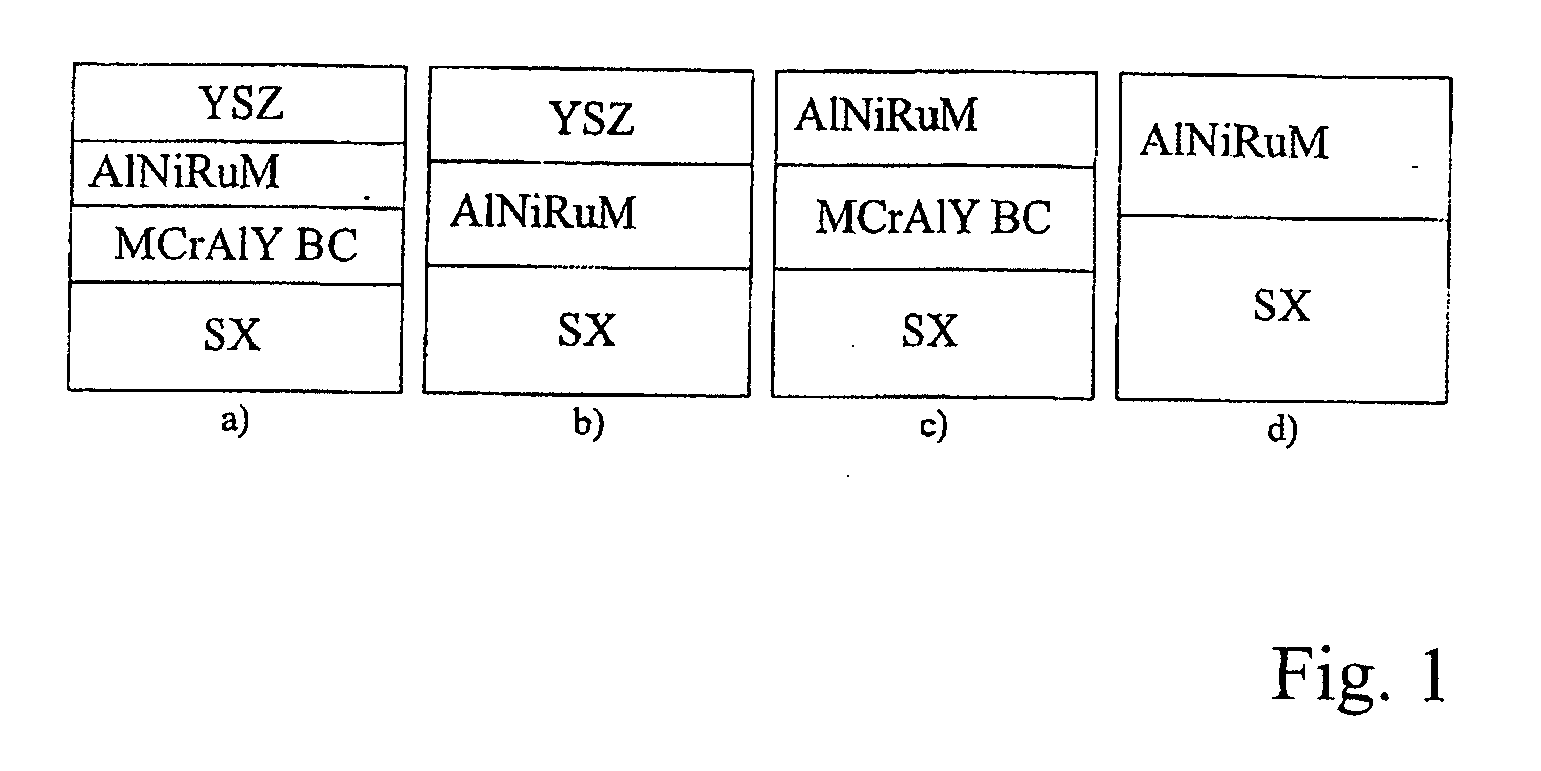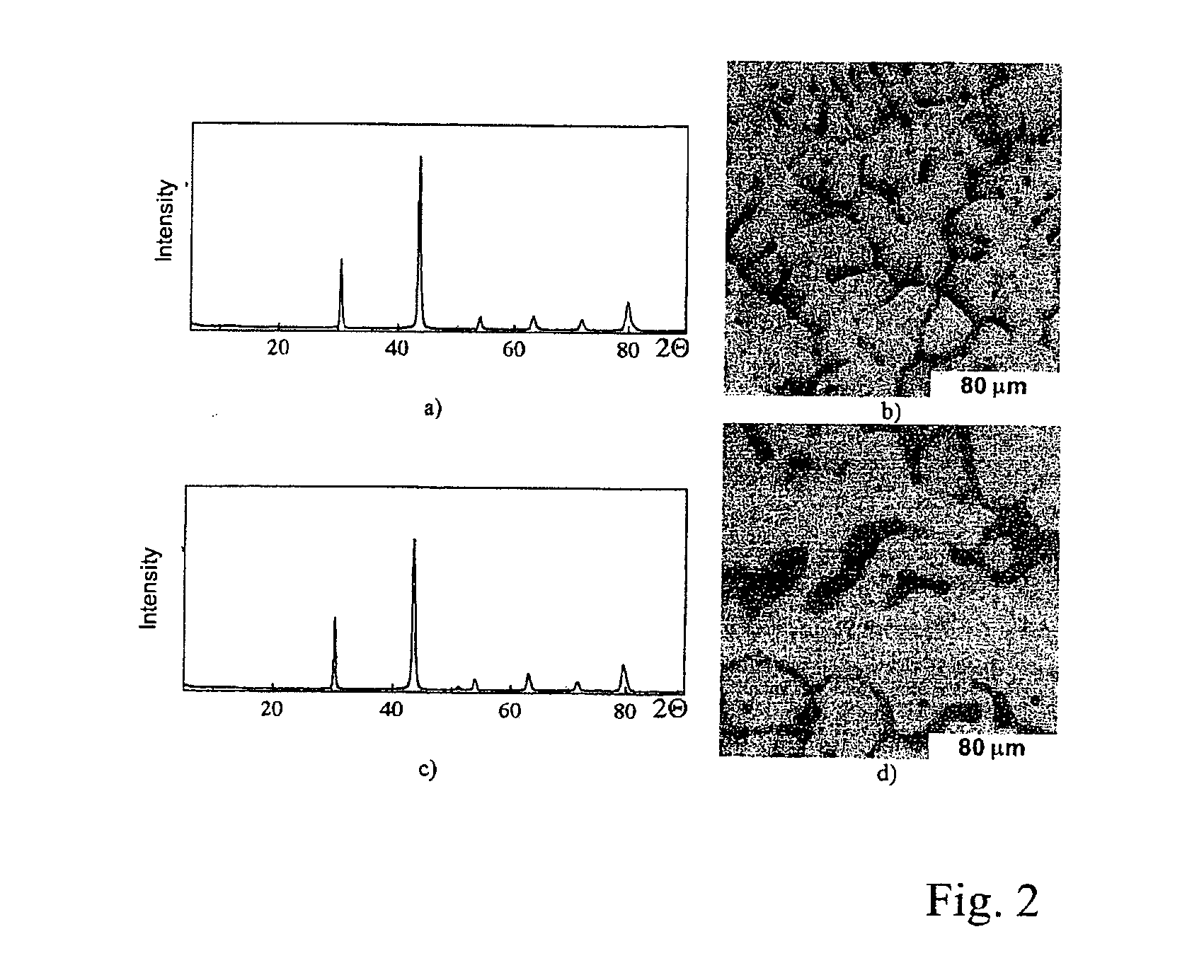Aluminum-based multinary alloys and their use as heat- and corrosion-resistant coatings
a multi-nary alloy and alloy technology, applied in the field of alloys, can solve the problems of aluminum depletion, high price of metals, and disadvantages of platinum group metals which can be used as thermal barrier coating materials (tbc), and achieve the effects of reducing maintenance costs, high coating advantages, and substantial gain in performance and service li
- Summary
- Abstract
- Description
- Claims
- Application Information
AI Technical Summary
Benefits of technology
Problems solved by technology
Method used
Image
Examples
Embodiment Construction
[0041] Thermal degradation and oxidation of components of gas turbines or jet engines under the simultaneous action of high temperature and oxidation or a corrosive environment restrict the possible operating temperature (which reduces the possible efficiency of the turbine) and lead to a reduction of the service life of the components (with an associated increase in maintenance costs). A modem system protecting against thermal loading and oxidation may generally be considered as a three-layer structure: a superalloy substrate SX based on nickel (Ni), a bond coat (BC, MCrAlY or nickel aluminides) and an outer layer of a thermally insulating oxide (thermal barrier coating, TBC, normally YSZ).
[0042] Unfortunately, composite structures assembled in this way lead to spallation of the YSZ layer in hot and aggressive environments. This occurs on account of a poor match between the coefficients of thermal expansion of the metallic and ceramic parts of the component, on account of the form...
PUM
| Property | Measurement | Unit |
|---|---|---|
| thickness | aaaaa | aaaaa |
| thickness | aaaaa | aaaaa |
| temperature | aaaaa | aaaaa |
Abstract
Description
Claims
Application Information
 Login to View More
Login to View More - R&D
- Intellectual Property
- Life Sciences
- Materials
- Tech Scout
- Unparalleled Data Quality
- Higher Quality Content
- 60% Fewer Hallucinations
Browse by: Latest US Patents, China's latest patents, Technical Efficacy Thesaurus, Application Domain, Technology Topic, Popular Technical Reports.
© 2025 PatSnap. All rights reserved.Legal|Privacy policy|Modern Slavery Act Transparency Statement|Sitemap|About US| Contact US: help@patsnap.com



